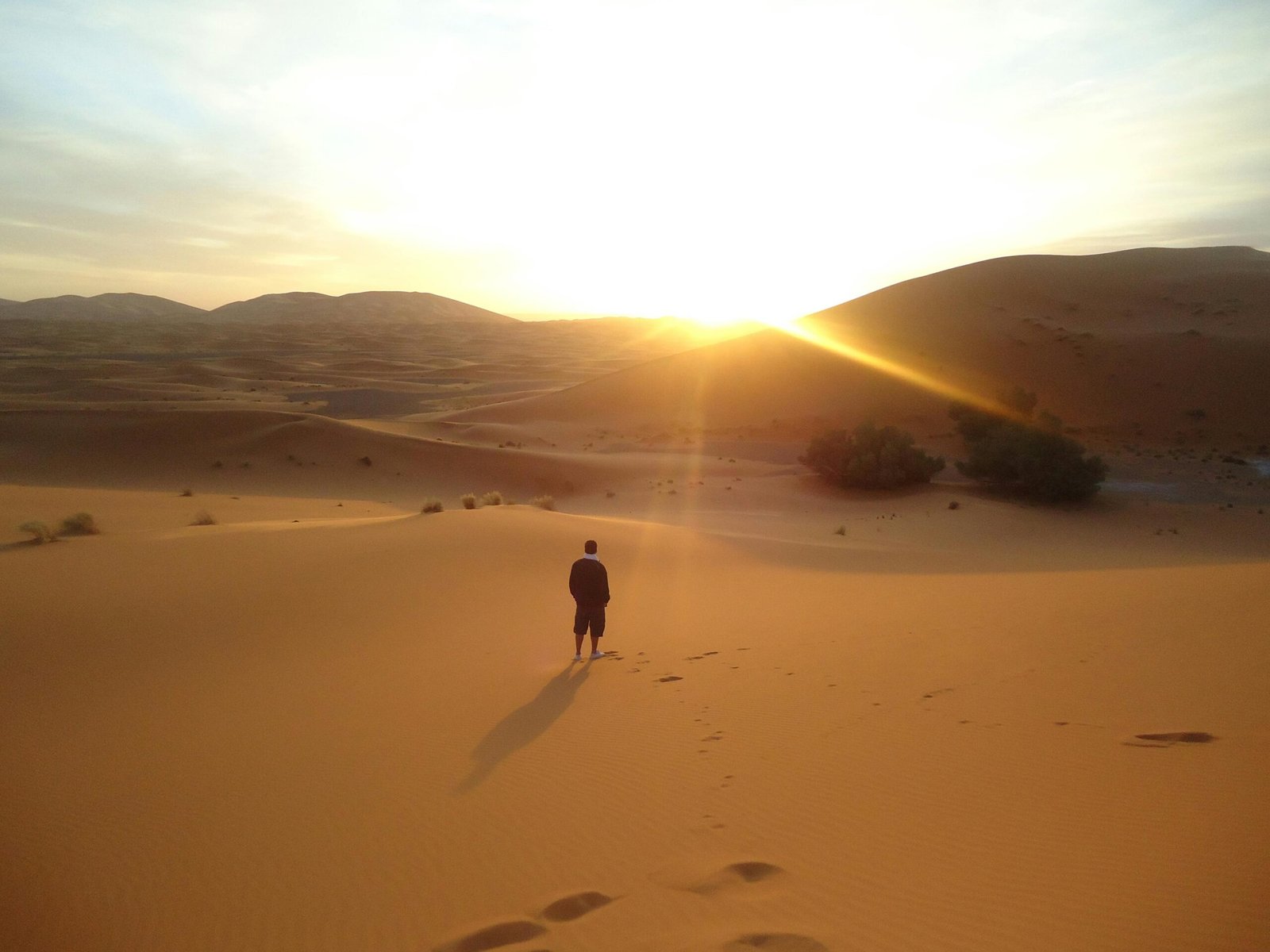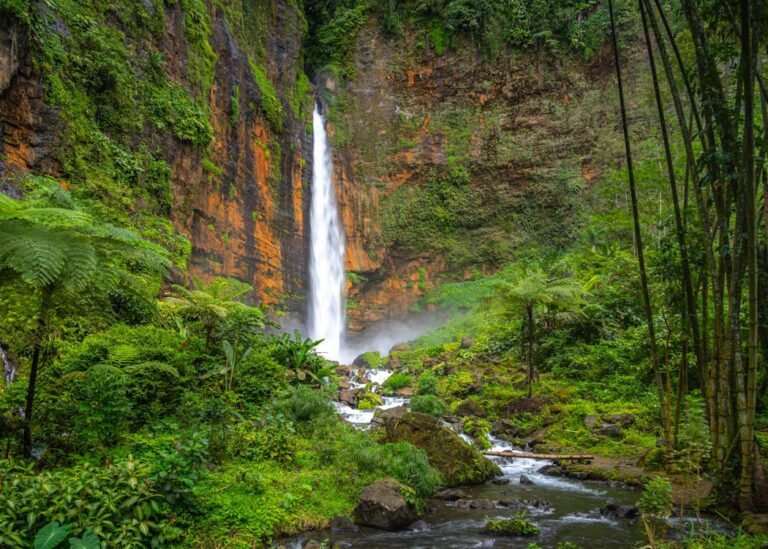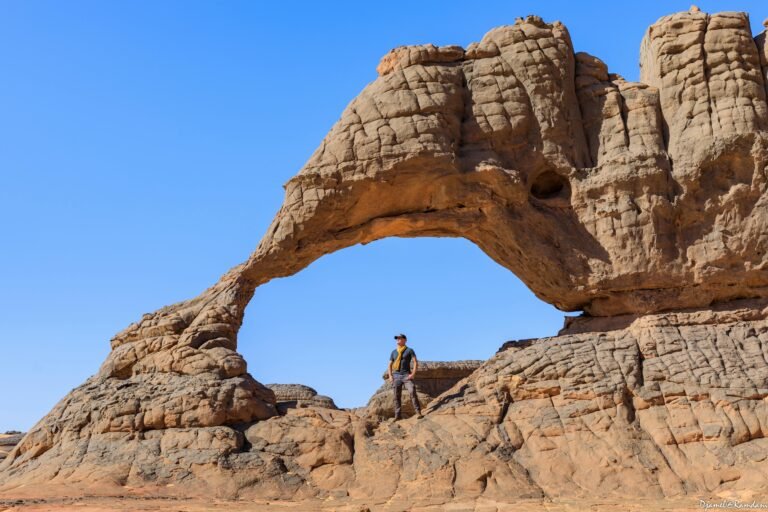Navigating Sand Dunes: A Step-by-Step Guide for Desert Trekkers

Navigating sand dunes can feel overwhelming at first. The shifting terrain, the steep climbs, and the endless sea of sand might seem like a challenge you’re not ready for. But trust me, with the right mindset and preparation, it’s not as complicated as it looks.
I’ve spent years exploring remote places, and sand dunes remain some of the most rewarding landscapes I’ve trekked. They test your patience, your planning, and your determination.
In this guide, I’ll walk you through the steps to confidently tackle dunes. Whether you’re planning a quick trip or a multi-day desert trek, understanding the terrain, using proper techniques, and staying safe are key.
It’s not about rushing from one point to another; it’s about enjoying the journey, staying mindful, and respecting the environment around you.
Are you ready to learn how to master the art of navigating sand dunes?
Let’s dive in.
Step 1 – Understanding Sand Dune Terrain
Before you can start trekking, you need to understand what you’re walking into—literally. Sand dunes are unique and unpredictable. They’re shaped by the wind, shifting constantly, which makes navigation tricky.
Why Sand Dunes Are Challenging
The main challenge of navigating sand dunes is the loose, shifting ground. With every step, the sand gives way under your feet, making it feel like you’re taking two steps forward and one step back.
The steep slopes and ridges add to the difficulty. Wind and weather also play a huge role—what looked like a clear path in the morning might disappear entirely by afternoon.
Different Types of Dunes and How They Impact Navigation
Not all dunes are the same. Knowing the type of dune you’re dealing with can help you plan your route:
- Crescentic Dunes
These are the most common type and are usually shaped like a crescent moon. They’re easier to navigate because the ridges are smoother, and you can often follow them in a single direction. - Star Dunes
These look like a star with multiple arms stretching out. They’re trickier because the ridges go in different directions. You’ll need to stay more alert to avoid getting turned around. - Linear Dunes
These run in long, straight lines. They’re more predictable and ideal for beginners because you can follow the ridges without much deviation.
Observing the Terrain
Take time to study the landscape before diving in. Look at the patterns of the dunes and the direction of the wind. Dunes form when wind piles up sand on one side (the windward side) and creates a slope on the other (the leeward side).
This means the slopes are usually gentler on the windward side and steeper on the leeward side. Stick to the gentler slopes whenever possible to save energy.
Understanding the terrain is the first step to making your trek manageable. Once you know the lay of the land, you’re ready to start planning your route.
Step 2 – Planning Your Route Across Sand Dunes

Planning is everything when it comes to navigating sand dunes. Without a clear route, it’s easy to waste energy or even get lost. Unlike trails in the mountains or forests, dunes don’t have permanent paths. The wind wipes away footprints, and the landscape is always changing.
But don’t worry; with some preparation and smart navigation techniques, you can stay on track.
Analyze the Landscape Before You Start
Before setting off, take a moment to observe your surroundings:
- Watch the Wind: Sand piles up on the windward side of dunes, and it’s usually safer to walk on these gentler slopes. The leeward side (downwind) is steeper and less stable.
- Choose Gradual Slopes: Climbing steep inclines will exhaust you quickly. Plan your path to include as many gradual slopes as possible, zigzagging when needed.
- Avoid Sand Traps: Low areas between dunes, often called dune troughs, can be more compacted but are also more likely to hide softer patches or debris.
Use Natural Navigation Tools
Navigation in the dunes relies on both traditional and modern methods:
- Sun and Shadows: In the desert, the sun can be your best guide. Shadows cast by dunes can help you identify the direction you’re heading. Just be aware that shadows shift as the day goes on.
- Landmarks: Look for fixed points on the horizon, like mountains, a cluster of trees, or even distant rock formations. Use these to orient yourself.
Using Technology to Stay on Track
Modern tools can be lifesavers when trekking through sand dunes. While you shouldn’t rely on them exclusively, they’re invaluable when used correctly:
- GPS Devices: Before you begin, set waypoints along your planned route. These waypoints can help you find your way even if the landscape changes.
- Compass: A simple compass is a reliable backup if your GPS fails. Knowing the direction you’re heading can prevent you from walking in circles.
- Smartphone Apps: Some apps provide offline maps and navigation tools that work even without cell service. Just ensure your phone is fully charged, and carry a power bank.
Don’t Over-Rely on Footprints
Footprints may seem like a good guide, but they can disappear quickly with a gust of wind. If you’re following someone, keep their general direction in mind rather than depending entirely on their tracks.
Break the Route into Manageable Sections
Instead of focusing on your final destination, divide the trek into smaller goals. Aim for a specific dune or a visible landmark in the distance, then plan the next leg once you get there. This approach keeps you mentally focused and prevents overwhelm.
Planning your route isn’t just about saving time—it’s about conserving energy and staying safe. Once you’ve mapped out a solid plan, you’re ready to tackle the dunes with the right walking techniques.
Step 3 – Walking Techniques for Sand Dune Navigation

Walking through sand dunes isn’t the same as strolling on a hiking trail. Each step requires more effort, and without the right techniques, you’ll wear yourself out quickly. To conserve energy and maintain your footing, you’ll need to adjust your approach based on the terrain.
Climbing Up Dunes
The hardest part of navigating sand dunes is climbing to the top. Directly walking up a steep slope might seem like the quickest option, but it’s a recipe for exhaustion. Instead, try these techniques:
- Zigzag Your Path: Walking diagonally across the slope rather than straight up reduces the strain on your legs. It also gives you better traction since you’re not fighting gravity head-on.
- Step on Firm Sand: If possible, stick to areas where the sand is more compact, usually near the ridges or spots shaded by other dunes. Loose sand will only cause you to sink and waste energy.
- Take Small, Controlled Steps: Big steps make you sink deeper into the sand. Smaller steps help you stay stable and conserve energy.
Walking Along Ridges
Once you reach a ridge, the walking gets a little easier—but it still requires care:
- Distribute Your Weight: Keep your feet flat and spread your weight evenly. This reduces the risk of slipping or causing the ridge to collapse under you.
- Stay Clear of the Edges: The sides of dunes are often unstable, and a collapse could lead to a dangerous slide. Walk closer to the center of the ridge for better stability.
Descending Dunes Safely
Going downhill might seem easy, but it can be just as tricky as climbing up. Rushing can lead to falls or even trigger a small sandslide. Here’s how to do it right:
- Walk Sideways: Turning sideways while descending helps you maintain balance and keeps your footing more secure.
- Slide with Control: If the sand is soft enough, sliding down can be a fun and efficient way to descend. Bend your knees slightly and keep your steps short to stay in control.
- Avoid Running: It’s tempting to run downhill, but it’s risky. Running increases the chance of losing your balance or disturbing unstable sand, which could cause injuries.
Adjusting to the Sand
Walking on sand takes practice. Pay attention to how the ground feels under your feet and adjust your stride as needed. With time, you’ll find a rhythm that works for you.
By using these walking techniques, you’ll save energy and reduce your chances of getting injured. Once you’re comfortable with your stride, the next challenge is staying oriented in the dunes.
Step 4 – Dealing with Sand Dune Challenges

Trekking through sand dunes isn’t just about moving from one spot to another; it’s about managing the challenges that come with the terrain and the environment. From shifting sands to sudden windstorms, staying prepared and adaptable is key to overcoming obstacles.
Managing Fatigue
Walking on loose sand takes more energy than walking on solid ground, so pacing yourself is crucial:
- Take Short, Frequent Breaks: Instead of pushing until exhaustion, rest for a few minutes every 20–30 minutes. If possible, find shaded spots or use an umbrella to shield yourself from the sun.
- Keep a Steady Pace: Avoid starting too fast. A consistent, moderate pace will help you conserve energy for the long haul.
- Use Trekking Poles: These can help distribute your weight and make it easier to move through loose sand.
Shifting Sands and Stability Issues
The ever-changing nature of dunes can catch you off guard. A step that feels firm one moment might sink the next:
- Test the Ground First: Before committing your weight to a step, test the sand with a light press of your foot. If it feels too loose, adjust your path.
- Follow Footprints When Possible: If you come across a well-worn path, use it. The compacted sand in footprints offers better traction than untouched areas.
- Walk with Your Weight Balanced: Keep your weight centered over your feet to reduce the risk of sinking or sliding.
Handling Windstorms
Windstorms can arise suddenly in desert environments, turning visibility to zero and blasting you with sand:
- Stop and Stay Put: If a storm hits, find a safe spot to stop. Turning away from the wind and crouching low can minimize exposure.
- Cover Your Face: Use a scarf, bandana, or even your shirt to shield your nose and mouth. Goggles or sunglasses are essential to protect your eyes.
- Wait It Out: Most windstorms pass quickly. Be patient and only continue when it’s safe.
Staying Mentally Resilient
The challenges of sand dunes aren’t just physical—they’re mental too. It’s easy to feel overwhelmed when progress is slow or when you’re faced with unexpected obstacles. Stay focused on small wins, like reaching the next ridge or landmark, to keep your morale high.
By learning to manage these challenges, you’ll not only make your trek safer but also more enjoyable.
Step 5 – Staying Safe During Sand Dune Navigation

Safety should always be your top priority when navigating sand dunes. The desert is as beautiful as it is unforgiving, so being well-prepared is crucial.
From managing hydration to dealing with emergencies, a few precautions can make the difference between a successful trek and a dangerous situation.
Hydration and Sun Protection
The dry desert air and relentless sun can dehydrate you faster than you realize. Staying hydrated and protecting yourself from the sun is non-negotiable:
- Carry Plenty of Water: Bring at least 2–3 liters of water per person for a day trek. If you’re hiking for multiple days, plan ahead with water caches or purification tools for any available water sources.
- Wear UV-Resistant Clothing: Long sleeves, lightweight fabrics, and a wide-brimmed hat will protect your skin from the sun without trapping heat.
- Apply Sunscreen Frequently: Use a broad-spectrum sunscreen with at least SPF 30, and reapply every two hours, especially if you’re sweating.
Emergency Preparation
The desert’s isolation means that help might not be readily available. Always prepare for the unexpected:
- Share Your Plan: Let someone know your route, expected return time, and any planned stops. Stick to your plan so rescuers can find you if needed.
- Carry Essential Gear: Pack a whistle, flashlight, reflective gear, and a fully charged power bank for your phone or GPS. These items can help you signal for help or navigate in low visibility.
- Know Basic First Aid: From treating blisters to addressing dehydration, understanding basic first aid can help you stay calm and handle minor issues before they become major problems.
Wildlife Awareness
Though the desert may seem lifeless at first glance, it’s home to creatures that can pose risks:
- Watch Where You Step: Snakes, scorpions, and other creatures often hide under rocks or in shaded areas. Be cautious when sitting or reaching into crevices.
- Avoid Provoking Wildlife: Most desert animals are not aggressive but will defend themselves if threatened. Give them space and move away slowly if you encounter one.
Monitor Your Energy Levels
Fatigue can lead to poor decisions and mistakes. Keep an eye on your physical and mental state:
- Recognize Early Signs of Exhaustion: Feeling lightheaded, overly hot, or unusually tired? Stop, hydrate, and rest in the shade before continuing.
- Know When to Turn Back: If conditions worsen or you’re feeling unwell, it’s okay to abandon your trek. Safety always comes first.
By taking these precautions, you’ll minimize risks and enjoy your trek with peace of mind. All that’s left now is to take everything you’ve learned and apply it on your journey.
Conclusion
Navigating sand dunes is more than just a physical challenge—it’s a test of patience, preparation, and awareness. The dunes may look intimidating at first, but with the right techniques and a thoughtful approach, they become an adventure worth taking.
By understanding the terrain, planning your route, and mastering efficient walking techniques, you’ll conserve energy and stay on track. Staying oriented and prepared for challenges ensures you won’t just survive the trek but thrive in the experience.
So, are you ready to face the dunes? With these steps in mind, you can embark on your journey knowing you’re well-equipped for whatever the desert throws your way.
Embrace the challenge, take your time, and let the dunes guide you into an unforgettable adventure.






